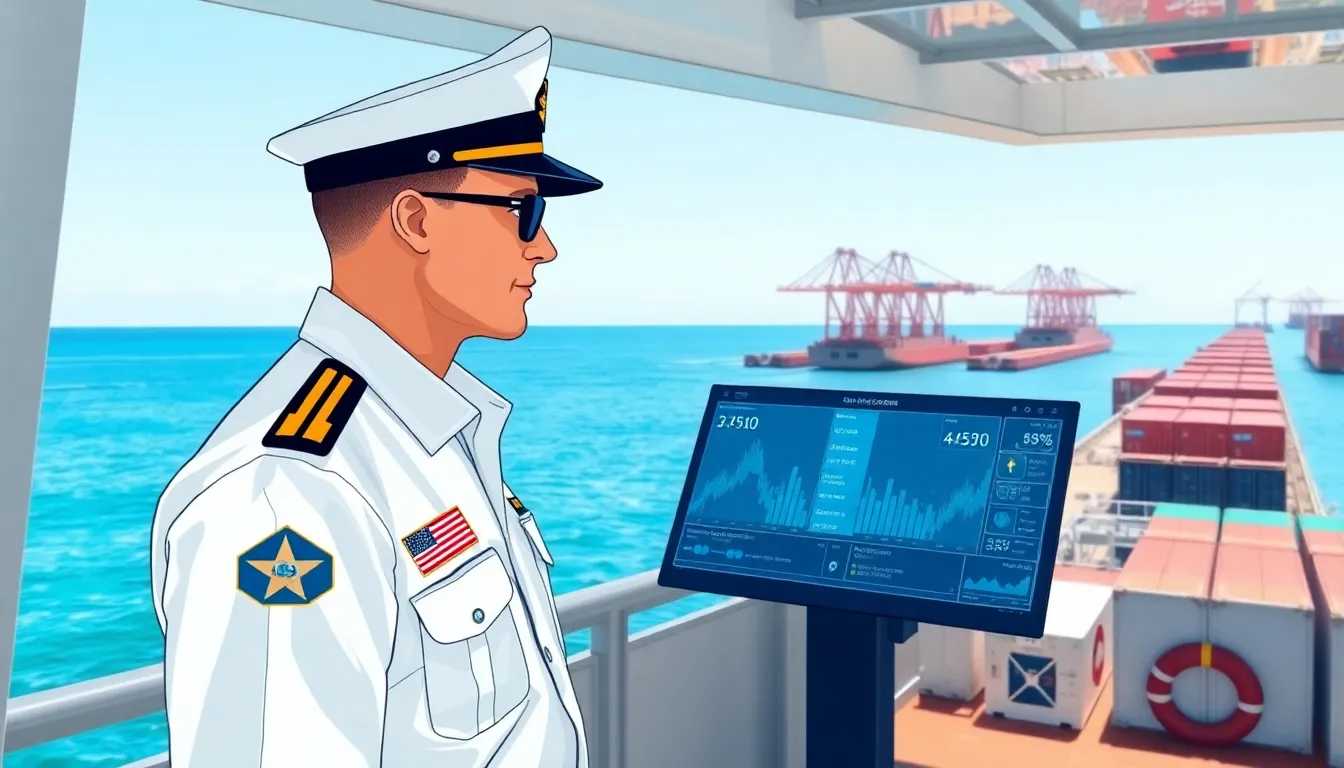In a world where ships don’t just sail but dance across the waves, maritime software is the unsung hero keeping everything shipshape. Imagine navigating the vast oceans of data while sipping your coffee, all thanks to the magic of technology. It’s not just about fancy charts and graphs; it’s about making sense of the chaos that is the maritime industry.
Table of Contents
ToggleOverview Of Maritime Software
Maritime software plays a pivotal role in streamlining maritime operations. It enhances efficiency while managing the vast amount of data generated by the industry.
Definition And Purpose
Maritime software encompasses applications designed for various functions within the maritime sector. It facilitates navigation, vessel management, and fleet operations. By integrating real-time data, this technology supports informed decision-making and improves safety standards. Users in shipping companies employ maritime software to optimize routes, manage cargo logistics, and monitor vessel performance. This technology addresses the unique challenges faced by modern maritime operations, providing solutions that increase productivity.
Key Features
Key features of maritime software include real-time tracking, automated reporting, and compliance management. Real-time tracking allows users to monitor vessels’ locations, thus optimizing navigation and reducing delays. Automated reporting simplifies documentation by generating essential forms and logs automatically. Compliance management ensures adherence to international regulations, enhancing safety protocols. Additionally, user-friendly interfaces improve accessibility, enabling companies to train staff effectively. These features collectively contribute to enhancing operational efficiency, mitigating risks, and increasing profitability in maritime operations.
Types Of Maritime Software

Various types of maritime software streamline operations and enhance efficiency. Each category addresses specific needs within the maritime industry.
Fleet Management Software
Fleet management software optimizes the deployment and operation of vessels. This type of software tracks vessel locations, schedules maintenance, and manages fuel consumption. It facilitates communication among crew members and shore-based personnel through integrated platforms. Enhanced visibility of fleet performance leads to improved decision-making. Organizations benefit from reduced operational costs, increased cargo capacity, and better compliance with regulations.
Navigation Software
Navigation software ensures safe and efficient vessel routing. This software utilizes GPS and AIS (Automatic Identification System) for real-time positioning and tracking. Advanced algorithms analyze weather conditions, tides, and currents, allowing for adaptive course adjustments. Users receive alerts about potential hazards in navigable waters. These systems ultimately enhance maritime safety and reduce travel time, leading to significant economic advantages.
Compliance And Safety Software
Compliance and safety software monitors adherence to regulations and safety standards. This type of software automates reporting and documentation processes, simplifying compliance audits. It tracks safety drills, equipment inspections, and crew certifications. By identifying gaps in safety protocols, organizations enhance risk management strategies. Proactive compliance efforts reduce liabilities and promote a culture of safety within maritime operations.
Benefits Of Using Maritime Software
Maritime software delivers numerous advantages that directly influence operational capabilities and safety standards within the industry.
Improved Efficiency
Increased automation enhances task execution, minimizing human errors in maritime operations. Fleet management software streamlines vessel deployment by efficiently tracking locations and scheduling maintenance. Timely insights from this software enable proactive decision-making, which further reduces fuel consumption. Operators experience optimized routes due to real-time data integration, ultimately leading to significant cost savings. Improved collaboration among teams enhances workflow efficiency, resulting in smoother operations. Organizations reporting data-driven insights can adapt rapidly to changing conditions, ensuring operational resilience.
Enhanced Safety Measures
Safety becomes a priority through the integration of maritime software in organizational practices. Navigation software employs GPS and AIS for real-time tracking, while adaptive routing features promote safe navigation. Systems equipped with automated reporting ensure compliance with safety regulations, improving risk management significantly. These tools not only streamline documentation but also foster a culture of safety. Personnel engaged with compliance and safety software can swiftly address issues before they escalate. By prioritizing safety, companies experience reduced incidents and enhanced overall operational integrity.
Challenges In Maritime Software Implementation
Implementing maritime software presents several challenges that organizations must navigate to ensure success. Significant issues arise during integration with existing systems and training staff adequately.
Integration With Existing Systems
Integration with existing systems remains a critical hurdle in maritime software implementation. Companies often use legacy systems that lack the flexibility required for modern software solutions. Compatibility issues can lead to data silos, disrupting operations. Additionally, customized solutions may be needed to facilitate data sharing and communication among various platforms, increasing complexity. Effective planning and collaboration among IT teams are essential for seamless integration. A thorough assessment of current systems can help identify potential integration obstacles and streamline the transition.
Training And Support
Training and support are vital for maximizing the benefits of maritime software. Employees need comprehensive training to utilize new tools effectively. Insufficient training may result in underutilization and frustration among staff members. Support mechanisms, including ongoing assistance and resources, should accompany the training process to ensure smooth adaptation. Partnering with software vendors for tailored training programs enhances user proficiency and confidence. Regular updates and refresher courses contribute to maintaining a knowledgeable workforce, ultimately leading to improved operational efficiency.
Future Trends In Maritime Software
Maritime software continues to evolve, embracing innovations that enhance operational efficiency and safety across the industry.
Artificial Intelligence And Automation
Artificial intelligence (AI) significantly impacts maritime software. It analyzes vast datasets quickly, improving decision-making. Automation streamlines routine tasks, reducing human errors. Predictive analytics helps identify maintenance needs before issues escalate, ensuring vessel reliability. Companies can optimize routes based on real-time data, resulting in lower fuel consumption and expenses. Enhanced data processing improves compliance by monitoring regulations actively. AI-driven solutions encourage sustainable practices, enabling resource-efficient operations.
Cloud Computing Developments
Cloud computing transforms maritime software by offering flexibility and scalability. It facilitates real-time data sharing, enhancing collaboration across fleets and teams. Secure cloud environments allow for seamless integration of various applications, eliminating data silos. Companies can access data from anywhere, optimizing operational responses during emergencies. Cost efficiency improves as organizations shift to subscription models rather than traditional licensing. The availability of cloud-managed services ensures timely updates and maintenance, fostering continuous improvement in maritime operations.
Maritime software stands as a pivotal component in modern maritime operations. Its ability to streamline processes and enhance safety cannot be overstated. As the industry continues to embrace technological advancements like AI and cloud computing, the potential for improved efficiency and decision-making grows.
Organizations that invest in effective maritime software will likely see significant returns in operational performance and safety standards. By overcoming integration challenges and prioritizing training, companies can fully leverage these tools to navigate the complexities of the maritime world. The future of maritime operations is bright, and those who adapt will thrive in an increasingly competitive landscape.




